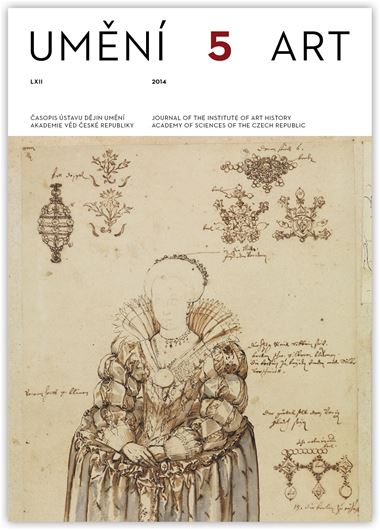Jan Ivanega
Korespondence Jaromíra Neumanna a Vincence Kramáře
This edited collection of letters acquaints readers with the relationship between Vincenc Kramář (1877–1960) and Jaromír Neumann (1924–2001). Kramář was a prominent representative of the Vienna school of art history (he studied under Alois Riegl and Franz Wickhoff) and gained renown primarily as a collector of art and a theorist of cubism. In addition to doing research, focusing on analyses of individual works of art or artists, he also made an important mark on the interwar art scene in Czechoslovakia as the director of the Picture Gallery of the Society of Patriotic Friends of Art (Společnost vlasteneckých přátel umění). As soon as the Second World War ended he joined the Communist Party of Czechoslovakia, and so did Jaromír Neumann, who at the time was a young student of art history, which he studied, along with aesthetics, at the re-established Department of Art History at the Faculty of Arts, Charles University in Prague. During his studies, Neumann—who would later (from 1960 to 1970) go on to become the director of the Institute of Art Theory and History at the Czechoslovak Academy of Sciences (Ústav teorie a dějin umění ČSAV) and a major scholar in the field of early modern painting—became acquainted with Kramář, with whom he shared similar research interests and political views. The letters exchanged between them in the late 1940s and in the 1950s provide evidence of the broad spectrum of thematic interests the two scholars had. Their primary interests were baroque art (the letters in particular discuss photo-documentation of paintings by Karel Škréta, which Kramář loaned Neumann so that he could create reproductions) and 19th-century art (Neumann’s studies of Aleš). The central issue discussed in their letters, however, was the reception of Soviet art and its use as a model for the development of Socialist-Realist art.
Full-text in the Digital Library of the Czech Academy of Sciences:
https://kramerius.lib.cas.cz/uuid/uuid:af742a55-a4bc-45ca-aea0-e6d390fbccbe
< back

